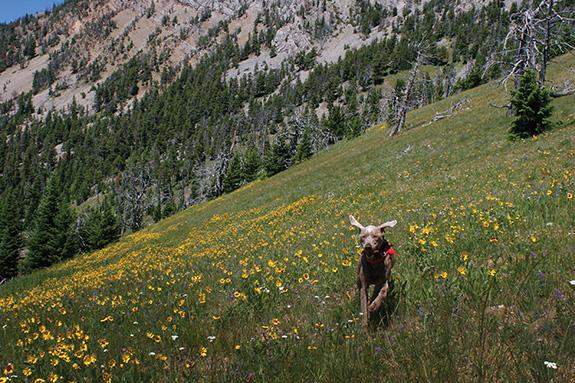Ask a Vet, Part II
Another persperctive on pet health.
Editor's Note: In our spring issue, readers asked long-time Montana veterinarian Sid Gustafson a few questions. For some variety, we decided to pose those same questions to another local vet, Chris Kenyon, to see if we got different answers. Not surprisingly, we did. Here’s what we found.
1. Should I be concerned about my dog getting into carcasses? Why?
There are many risks associated with letting your dog get into carcasses. If a dog ingests meat and bones from a carcass, there is potential for severe gastrointestinal distress, pancreatitis, obstruction, intestinal perforation, and internal and external parasites. Internal parasites may include tapeworms, roundworms, or hookworms, all of which can be transmittable to people and are especially dangerous for children or the immuno-compromised. External parasites can include fleas, ticks, or lice. Several of these parasites can transmit diseases to your dog. Fleas can transmit the plague and ticks can transmit Lyme Disease and Rocky Mountain Spotted Fever, among others.
Although many dogs enjoy eating carcasses, the risks can often outweigh the benefits. High quality, commercially available pet foods contain a scientifically recommended balance of nutrients, vitamins, and minerals that meet all of your dog’s needs. Prepared raw diets can be appropriate for some pets, but can also pose threats of salmonella, E. coli, fractured teeth, and nutritional deficiencies. If you choose to buy or prepare a raw diet, consult your veterinarian first.
2. How young is too young to start my pup trail running? To what length/distance should I limit my runs?
There are many considerations when looking at your puppy as a running partner. What breed is your dog? What is its timeline for development? While young dogs usually have the energy to keep up with their owners, that doesn’t mean that it is good for them. Vigorous exercise can produce long-term damage in young animals. Research has shown that dogs with a predisposition to orthopedic disease develop a healthier skeletal system if they are exercise-restricted during development.
Waiting until the growth plates close is a safe measure of when your dog is capable of beginning more intense exercise. In a small/medium breed this may be as early as eight months, but a larger breed should wait until 12-15 months old.
Always remember to condition your pet the same way you would condition yourself. Start slow and build your mileage together. Your veterinarian or trainer can provide guidelines based on your individual dog’s needs and capabilities.
3. Is heartworm something we need to worry about in Montana?
Every few years, the American Heartworm Society (AHS) does a study to determine the number of heartworm-positive cases per year. In the 2016 study, our valley reported 1-5 cases per clinic. While this may be low compared to endemic areas, it is not zero. Heartworm is transmitted by mosquitos and is found in all 50 states. The current AHS guidelines recommend yearly testing and year-round heartworm prevention, in all dogs, all states. “The average number of dogs diagnosed per clinic in 2016 rose by 21.7 % over 2013 numbers,” according to heartwormsociety.org. Preventative care that is given regularly is safer and easier for your dog than the traumatic and costly 271-day recommended treatment protocol set forth by the AHS. If untreated, heartworm disease can lead to heart failure. Annual heartworm testing and prevention are essential components of maintaining your dog’s health, even in Montana.
Chris Kenyon co-owns 360 Pet Medical in Bozeman.










